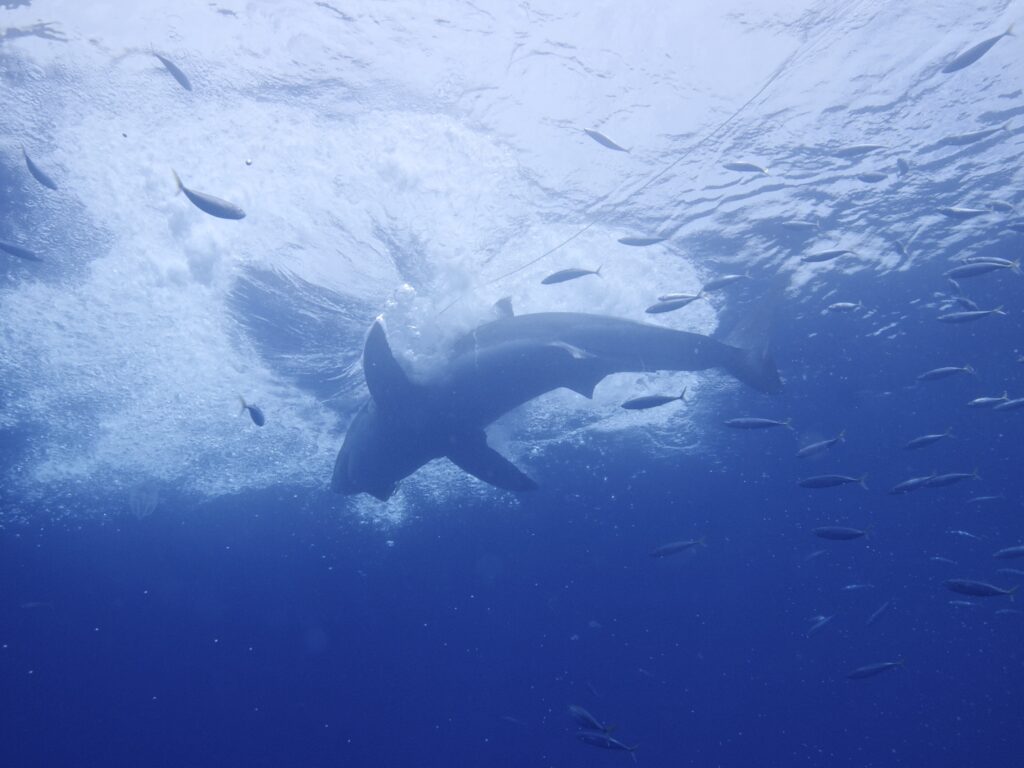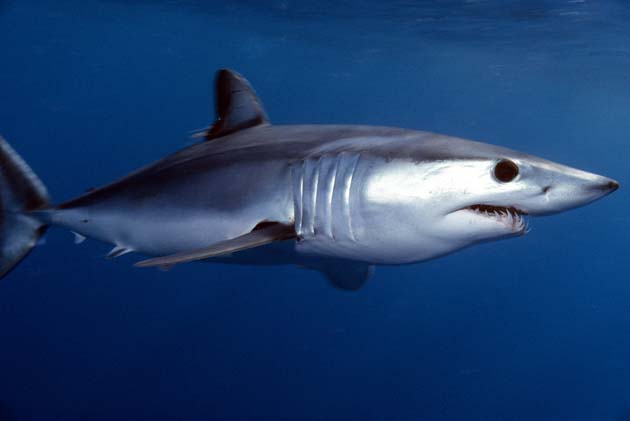Lamnids, more commonly known as the mackerel sharks, are a family of sharks that have the unique ability to somewhat regulate their body temperature, making them more endothermic than exothermic, which is very rare among fish. This unique adaptation is known as regional endothermy, which allows these species to keep their body temperature around 15oF above the surrounding water temperature, allowing them to live in colder climates. The five shark species in this family are the shortfin mako, the longfin mako, the great white, the salmon shark, and the porbeagle shark.
Regional endothermy is facilitated by the shark’s cardiovascular system, which centralizes many veins, arteries, and capillaries around their endurance muscles, also known as their red muscles. This centralized blood flow and metabolic activity flows counter to cooler blood that circulates from outer extremities of the shark (fins, skin, nose, etc.) Dr Haley Dolton describes this mixing of differing blood temperature on the World of Sharks podcast as similar to running the cold and warm water out of the tap to reach a desired temperature.
All of these species seasonally can be found in waters surrounding New England during the summer months. These sharks migrate up and down the Atlantic and Pacific coast of the United States to stay in their preferred temperature range which for most lamnids is around 600F. Great Whites are one of the most studied and famous lamnids, largely due to their large size, imposing frame, and less than favorable depictions in media. While they have undoubtedly harmed many humans in our history of interactions, the level of danger they pose is greatly exaggerated.
Other common features of these species’ other than their thermoregulation include pointed snouts, preference for colder waters, large gills and teeth, and often weigh much more than other sharks of comparable length. They also all possess countershading, a common form of camouflage in many marine organisms. Countershading causes organisms to have dark color on their dorsal side and light color on their underside, allowing them to effectively camouflage when they are being viewed from above or below.

Each one of these species have some very unique characteristics that differentiate themselves from one another. The shortfin mako can reach swim speeds of 46 mph making them the fastest shark species in the world. The salmon shark has a unique property of sexually segregating themselves until breeding season in the summer or fall where they all migrate to water around Japan or the Gulf of Alaska. Finally the most famous, the great white has been featured in countless books and films for it’s massive size and scary maw of sharp teeth. These sharks can jump 10 feet out of the water in pursuit of prey. It is the pinnacle of marine predator evolution and is one of my personal favorite animals on Earth.

Overall, lamnids have many unique characteristics and the family contains many iconic sharks as well as some more lesser known ones. Each provides great things to their respective ecosystems but sadly most of these species aren’t doing very well and are considered vulnerable. Because each of these predators keep balance in their waters, their conservation efforts should be supported. Luckily plenty of organizations NOAA and Ocearch are doing great work to study and preserve these wonderful species for future generations.